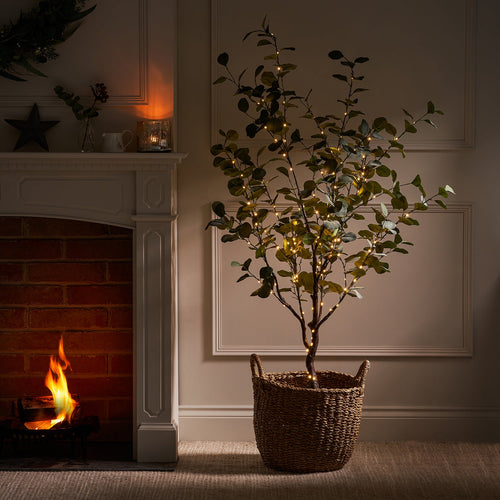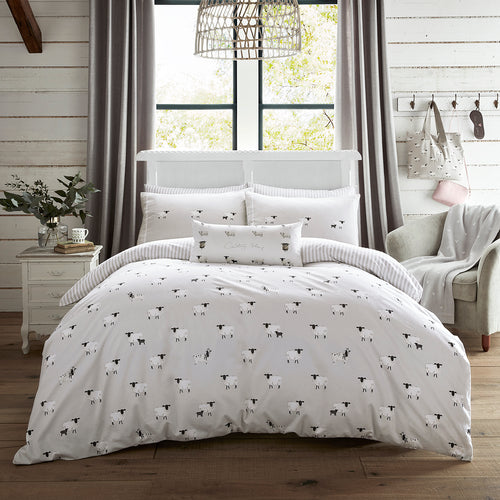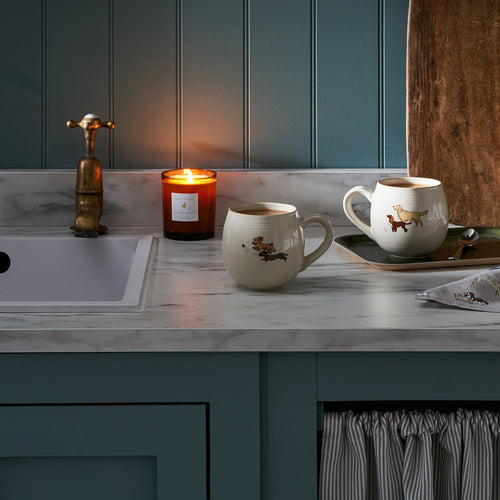Swimming elegantly in every ocean, whales are the largest animals on the planet which is just one incredible fact about these beautiful marine mammals. To celebrate World Whale Day on February 20th 2022, we’re taking a look at the different species that feature on Sophie's Whale collection of homewares, decor and accessories, answering a few popular questions about whales and looking at some whale facts.
Orca
Orcas (also known as the Orcinus orca or killer whales) are part of the Delphinidae family (dolphin). The name killer whale was given to orcas by ancient sailors as they witnessed them hunting much larger whales.
Orcas can live between 50 and 90 years in the wild. The males weigh up to an incredible 9,000kg with females up to 5,500kg. The orca might not be the biggest of marine mammals, but the males can grow up to 9.8 metres in length and the females up to 8.5 metres and are the largest member of the dolphin family, they also eat approximately 227 kilograms of food per day!
They are distinctively recognisable with their black backs and white stomachs, which scientist believe helps them stay camouflaged when hunting their prey. They are also incredibly intelligent and can swim at speeds of up to 54kph.
You’ll spot these incredible marine mammals on Sophie’s Whales collection, we love this knitted cushion featuring the remarkable orca.
Blue Whales
The blue whale is the largest animal to our knowledge ever have existed on Earth, but how big is a blue whale? On average most blue whales size between 21 to 27 metres, with the biggest blue whale measuring at 33.5 metres long. With size also comes weight, and blue whales can weigh upwards of 200 tons, with their hearts weighing as much as a car and their tongues weighing the same as an elephant.
Blue whales are classed as endangered after a period of commercial whaling and hunting in the 1900s, somewhat 360,000 blue whales were hunted for their oil. The blue whale became protected by the 1966 International Whaling Commission, however, they are still classed as endangered with a population of approximately 10,000 to 25,0000.
As well as being the largest animal on earth, blue whales are also one of the loudest animals on earth with their whale sounds (pulses, moans and groans) being heard up to 1,000 miles away from each other in clear conditions.
We love Sophie’s playful take on these incredible animals, she highlights the gracefulness of these beautiful whales on a range of homewares including tea towels, fine bone china mugs and table linens.
Sperm Whales
Sperm whales are currently classed as vulnerable with estimates suggesting there are approximately 200,000 still left in the wild. An interesting fact about adult sperm whales is that they have the biggest brains on earth which can weigh up to 17 pounds, they also have pretty incredible diving capabilities where they can dive as deep as 3,280 feet and hold their breath for up to 90 minutes.
Sperm whales are also very vocal and produce a series of clicks and clangs which are used for communication and echolocation to hunt for their prey. They will send out sounds and then listen for the echo as they bounce back from their target, revealing the location, size and shape.
Blowing bubbles on Sophie’s Whale design you’ll spot the sperm whale on various homewares and accessories, including kitchen linens, makeup bags and ironing board covers.
Humpback whales
Male humpback whales are famous for their long and complicated songs and are seen as masters of melody. Their songs can travel extremely far throughout the ocean and may be repeated for several hours. Although not the biggest whale in the ocean, they still can grow to an impressive 18 metres long and weigh approximately 40 tons, which is roughly about the same size as a bus.
Humpback whales have a pretty interesting way of feeding and sometimes gather their prey by using a unique feeding method called bubble netting, where they release rings of bubbles at depth to heard small schooling fish, which they then surface to eat.
What Whales can you see around the UK?
According to the Whale and Dolphin Conservation, there have been approximately 30 different species whales and dolphins spotted around the coastline of the UK.
Common species spotted include the bottlenose dolphin (often seen in Cardigan Bay in Wales and Moray Firth in Scotland), harbour porpoise (Western Scotland), minke whales (all around the UK coast, especially the west coast of Scotland, risso’s dolphins, (Bardsey Island in Wales and Isle of Lewis in Scotland) and killer whales (Northern Scotland in late spring). Other species that have been spotted but are less commonly seen are sperm whales, humpback whales, pilot whales and beaked whales.
Have you enjoyed reading all about these incredible animals? If so then you'll love our Q&A with Chris Butler-Stroud, CEO of the Whale & Dolphin Conservation.
We’d love to hear your thoughts about this lovely design, browse the collection and drop your comments below - tell us your favourite product!
3 comments
-
What a lovely read. Thank you, especially on world environment day.
Sarah on
-
I really enjoyed reading about the whales featured in the new collection as I was drinking my tea and eating my toast this morning. I learnt a few interesting facts that I’ll be passing on to my grandchildren. Thank you.
Susan Brooks on
-
Oh wow! I’ve been collecting hares because I love them but whales are my all time favourites so now I’ll be collecting those instead thank you xxx
Ghislaine Headland-Vanni on














